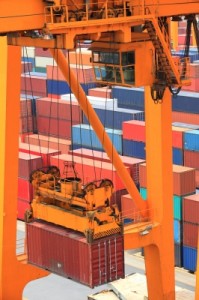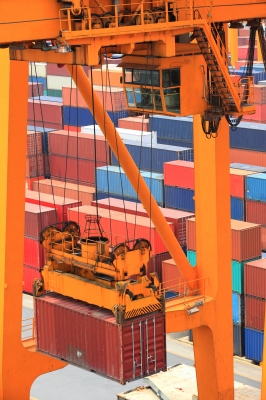
The Northern Mindanao shipping community has outlined a wish list for the logistics industry, which includes easing of the cabotage policy; implementation of a government policy to dispose of abandoned cargoes within a reasonable period of time; and government shouldering the cost of the impending expanded load port survey (LPS).
In a presentation at the PortCalls-organized Mindanao Shipping Conference 2014 held in Cagayan De Oro on June 18, Augustus Adis, president of the PIE-MO (Phividec Industrial Estate in Misamis Oriental) Industries Association, said the private sector is also pushing for:
- No further inspection, unless warranted, of shipments of importers enrolled under the Super Green Lane program;
- Easing of importer accreditation procedures at the Bureau of Internal Revenue (BIR) and Bureau of Customs (BOC) and for the two agencies to share information to eliminate redundant documentary requirements;
- Expansion of Laguindingan Airport Cargo Terminal and allied facilities; and
- Completion of the Carmen Hill by-pass road from Ala-e (in Cagayan de Oro) to the port for the safe transport and access of cargoes to and from central Mindanao.
Adis said easing the cabotage policy would help bring down the cost of shipping.
Maritime Industry Authority director (Marina) for Regions 10 and 13 Emmanuel Carpio, who also made a presentation at the conference, noted there is a pending bill seeking liberalization of cabotage.
Earlier, Marina administrator Dr Maximo Mejia, Jr. said the agency supports liberalization of the policy, in keeping with what President Aquino called for in his State of the Nation Address in 2013.
Also speaking at the conference, Philippine Institute for Development Studies (PIDS) senior research fellow Dr Adoracion Navarro said PIDS is advocating a “phased lifting of cabotage restrictions for some types of exports or for some volume of cargo” instead of immediate or blanket lifting.
On the issue of numerous overstaying and abandoned cargoes in container yards, Adis said this has led to “congestion, loss of cargo revenues, and opportunity losses from unused containers.”
In response, BOC deputy commissioner for Assessment and Operations Coordinating Group Atty Agaton Uvero, also a speaker at the Mindanao Shipping Conference, admitted the agency did not have a database for overstaying containers, but has begun coordinating with arrastre operators on the matter.
The customs official said they hope the pending Customs Modernization and Tariff Act will simplify the issue of how to address overstaying containers, and the disposal of forfeited or abandoned containers.
As for the clamor for government to shoulder the cost of the expanded LPS, as was the case from 1987 to 2001 when SGS handled the pre-shipment inspection scheme, Uvero replied this was “not doable,” but that BOC will ensure the cost of the LPS is “reasonable”. He added the BOC will identify agency savings that could help offset the additional cost.
Uvero noted the BOC is looking for the proper time to implement the program so it will have the least impact on importers. This is considering the “bad” situation in Manila due to port congestion brought about by the Manila truck ban.
On the wish for BIR and BOC to share information so that, Adis noted, “importers are freed from the burden of complying with similar requirements for data submission”, Uvero said as far as he knows, the BIR will be issuing a revised revenue memorandum order simplifying accreditation requirements.
The customs official said that even though application for accreditation seems difficult, the new procedure has a “silver lining” in that BIR renewal is now every three years instead of the previous once a year.
The Northern Mindanao shipping community wish list also included elimination of additional handling cost via return of total cargo inspection (Designated Examination Area or DEA) to within Mindanao Container Terminal (MCT) port premises, to which Uvero said there is an ongoing study being conducted by BOC Cagayan de Oro officials on the issue.
The shipping community also wants MCT declared as principal port of entry for the region (right now it is a sub-port and Cagayan de Oro is the base port); and the almost at-capacity MCT port expanded.
Adis said the declaration of MCT as a principal port is called for due to the huge volume of cargo it handles which has “spurred economic growth”, making the terminal a “key player in the development of the region”.
In 2013, 83% of MCT’s annual 270,000-TEU capacity was utilized.
Uvero noted the designation of MCT as a base port is “possible”. The Department of Finance has in fact ordered a review of ports and sub-ports as part of a ports rationalization plan, he explained.
MCT expansion is already being studied, according to Dante Clarito, head of Phividec Industrial Authority’s (PIA) port management division. PIA leases the land on which MCT sits to MCT operator Mindanao International Container Terminal Services, Inc.
On the push for expansion of Laguindingan airport, the National Economic and Development Authority Board chaired by President Aquino on June 19 approved the P14.62-billion operation and maintenance project for Laguindingan Airport, aimed at improving the hub’s capacity and upgrade its facilities and equipment. The project is expected to be completed in 2015. – Roumina Pablo
Image courtesy of potowizard / FreeDigitalPhotos.net





